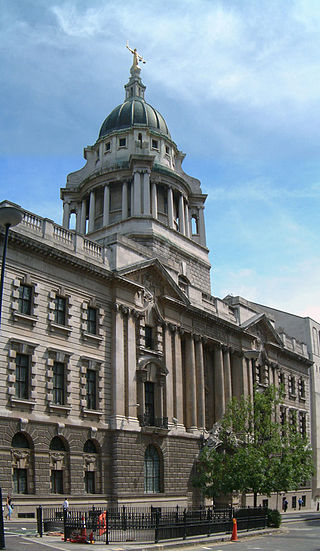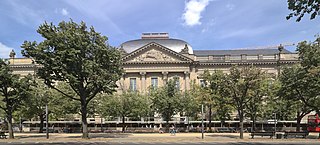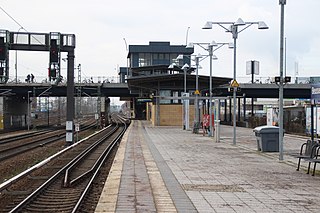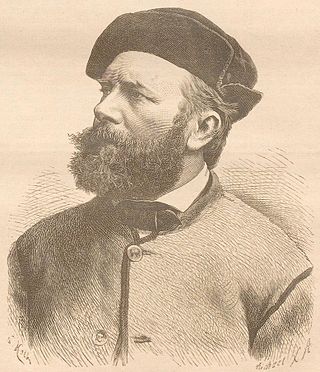
The Reichstag fire was an arson attack on the Reichstag building, home of the German parliament in Berlin, on Monday, 27 February 1933, precisely four weeks after Adolf Hitler was sworn in as Chancellor of Germany. Marinus van der Lubbe, a Dutch council communist, was the culprit; the Nazis attributed the fire to a group of Communist agitators, used it as a pretext to claim that Communists were plotting against the German government, and induced President Paul von Hindenburg to issue the Reichstag Fire Decree suspending civil liberties, and pursue a "ruthless confrontation" with the Communists. This made the fire pivotal in the establishment of Nazi Germany.

The Central Criminal Court of England and Wales, commonly referred to as the Old Bailey after the street on which it stands, is a criminal court building in central London, one of several that house the Crown Court of England and Wales. The street outside follows the route of the ancient wall around the City of London, which was part of the fortification's bailey, hence the metonymic name.

Mitte is the first and most central borough of Berlin. The borough consists of six sub-entities: Mitte proper, Gesundbrunnen, Hansaviertel, Moabit, Tiergarten and Wedding.

Tiergarten is a locality within the borough of Mitte, in central Berlin (Germany). Notable for the great and homonymous urban park, before German reunification, it was a part of West Berlin. Until Berlin's 2001 administrative reform, Tiergarten was also the name of a borough (Bezirk), consisting of the current locality (Ortsteil) of Tiergarten plus Hansaviertel and Moabit. A new system of road and rail tunnels runs under the park towards Berlin's main station in nearby Moabit.

The Federal Court of Justice is the highest court of civil and criminal jurisdiction in Germany. Its primary responsibility is the final appellate review of decisions by lower courts for errors of law. While, legally, a decision by the Federal Court of Justice is only binding with respect to the individual case in which it enters, de facto the court's interpretation of the law is followed by lower courts with almost no exception. Decisions handed down by the Federal Court of Justice can only be vacated by the Federal Constitutional Court for violating a provision of the German constitution, the Basic Law.

Moabit is an inner city locality in the borough of Mitte, Berlin, Germany. As of 2022, about 84,000 people lived in Moabit. First inhabited in 1685 and incorporated into Berlin in 1861, the former industrial and working-class neighbourhood is fully surrounded by three watercourses, which define its present-day border. Between 1945 and 1990, Moabit was part of the British sector of West Berlin and directly bordered East Berlin.

The Berlin State Library is a universal library in Berlin, Germany and a property of the Prussian Cultural Heritage Foundation.

Berlin Hauptbahnhof is the main railway station in Berlin, Germany. It came into full operation two days after a ceremonial opening on 26 May 2006. It is located on the site of the historic Lehrter Bahnhof, and on the Berlin S-Bahn suburban railway. The station is owned by DB InfraGO, a subsidiary of Deutsche Bahn AG, and is classified as a Category 1 station, one of 21 in Germany and four in Berlin, the others being Berlin Gesundbrunnen, Berlin Südkreuz and Berlin Ostbahnhof.

Kommune 1 or K1 was a politically motivated commune in Germany. It was created on 12 January 1967, in West Berlin and finally dissolved in November 1969. Kommune 1 developed from the extraparliamentary opposition of the German student movement of the 1960s. It was intended as a counter-model against the small middle-class family, as a reaction against a society that the commune thought was very conservative.
The law of Germany, that being the modern German legal system, is a system of civil law which is founded on the principles laid out by the Basic Law for the Federal Republic of Germany, though many of the most important laws, for example most regulations of the civil code were developed prior to the 1949 constitution. It is composed of public law, which regulates the relations between a citizen/person and the state or two bodies of the state, and the private law, (Privatrecht) which regulates the relations between two people or companies. It has been subject to a wide array of influences from Roman law, such as the Justinian Code the Corpus Juris Civilis, and to a lesser extent the Napoleonic Code.
Richard Curt Hottelet was an American broadcast journalist for the latter half of the twentieth century.

The Ringbahn is a 37.5 km (23.3 mi) long circle route around Berlin's inner city area, on the Berlin S-Bahn network. Its course is made up of a pair of tracks used by S-Bahn trains and another parallel pair of tracks used by various regional, long distance and freight trains. The S-Bahn lines S41 and S42 provide a closed-loop continuous service without termini. Lines S45, S46 and S47 use a section of the southern and western ring, while lines S8 and S85 use sections of the eastern ring. The combined number of passengers is about 400,000 passengers a day. Due to its distinctive shape, the line is often referred to as the Hundekopf.

Andrej Holm is a German sociologist. His work focuses on urban regeneration, gentrification and housing policy.

Beusselstraße is a Berlin S-Bahn station in the Moabit district in the Mitte borough of Berlin. It is located at the Beussel bridge, which carries the street of Beusselstrasse over the Berlin Ringbahn. It is served by the S-Bahn lines S41 and S42. It is additionally served by the line S46 on weekends.

The Landgericht Berlin is a regional court in Berlin, divided into two divisions for civil and criminal cases. In the German court hierarchy, it is above the eleven local courts (Amtsgerichte) of the city and below the Kammergericht, which is the highest regional court of Berlin. The Landgericht Berlin is the largest Landgericht in Germany, with about 900 employees.

The AEG turbine factory was built in 1909, at Huttenstraße 12–16 in the Moabit district of Berlin. It is the best-known work of architect Peter Behrens. The 100 m long steel-framed building with 15 m tall glass windows on either side is considered the first attempt to introduce restrained modern design to industrial architecture. It was a bold move, and world first that would have a durable impact on architecture as a whole.

Carl Conrad Albert Wolff was a German sculptor, and medallist.

Lehrter Straße is a residential street in Moabit, a sub district of Mitte, one of Berlin's 12 boroughs of which the borders were redefined following the 1989 Fall of the Berlin Wall. It runs for an almost completely straight length, except for a small kink shortly before its southern extremity. The street is approximately 1,500 metres long and lies in a southeasterly direction from the Perleberger Strasse near the Fenn Bridge, to the west of, and parallel to the disused Lehrter railway complex which was disbanded in the 1950s. It joins the Invalidenstraße a few hundred metres from the new Berlin Hauptbahnhof, near the site of the former Invalidenstraße East-West Berlin Cold War checkpoint. The street consists of 75 houses numbered in horseshoe fashion. After the Invalidenstrasse intersection the traffic route continues south on Clara-Jaschke Strasse.

History of the Berliner Pferdebahnhof
Berthold Wehmeyer was a German murderer and the last criminal sentenced to death and executed in West Berlin.

















